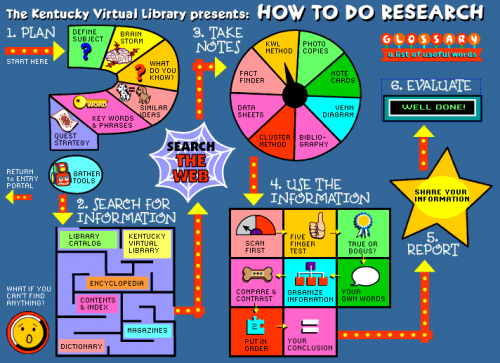In libraries and on the internet, you can find answers to almost any question you can think of. If you know how to do research, it can be much more fun… and faster too!
This is a very good, board game like online-introduction on how to do research for kids. The award-winning site site was created in 2003 by the Kentucky Virtual Library Kids and Teachers Workgroup, with design and animation by Shere Chamness. Thanks to its clever focus on the essentials of research (plan, search, take notes, use the information, report, evaluate), it is still extremely helpful. Nevertheless, I was wondering if there is any newer version of something like this out there “in the known universe”? I should do some additional research, but now I know exactly how to do.


